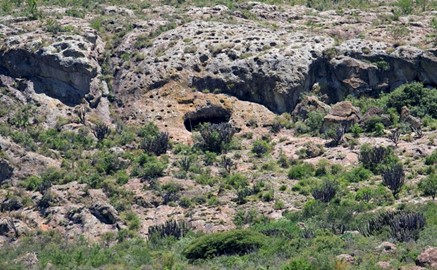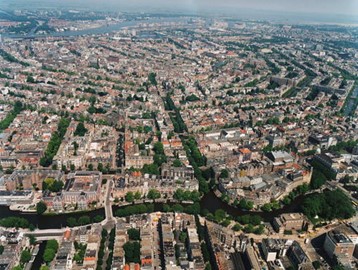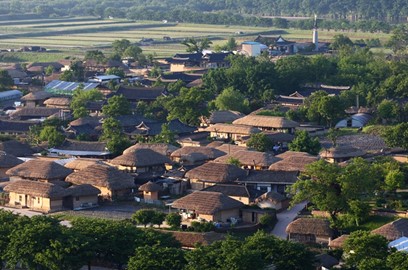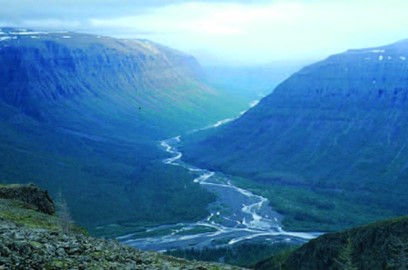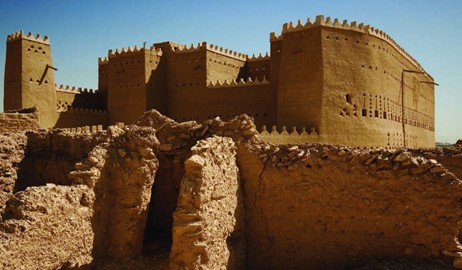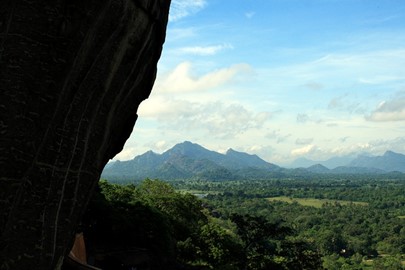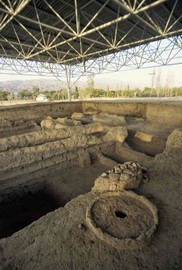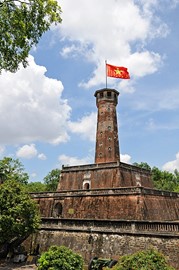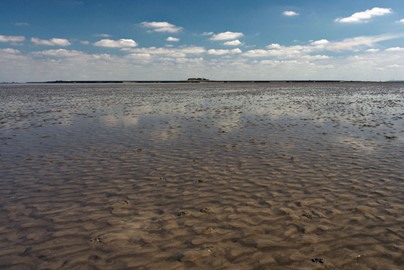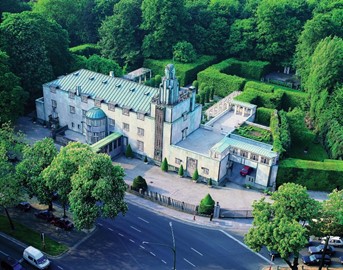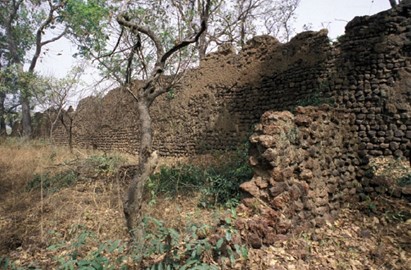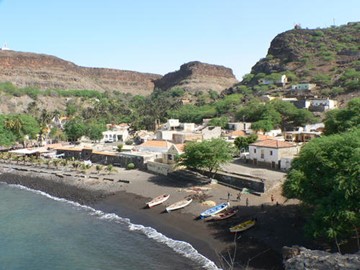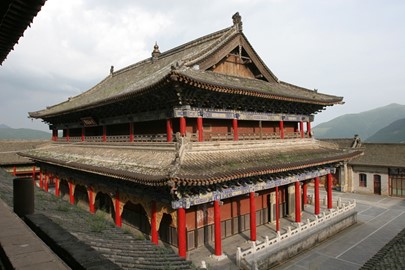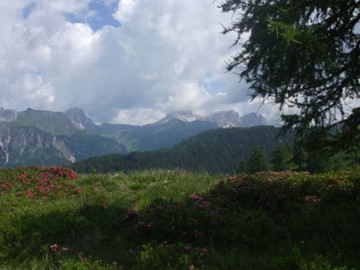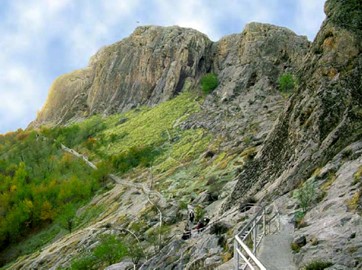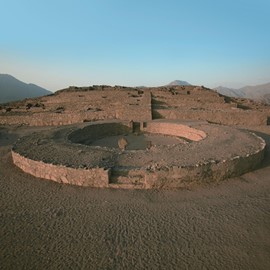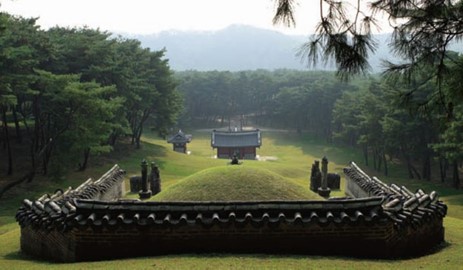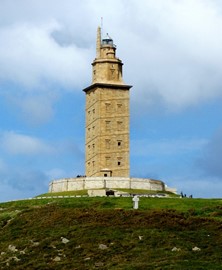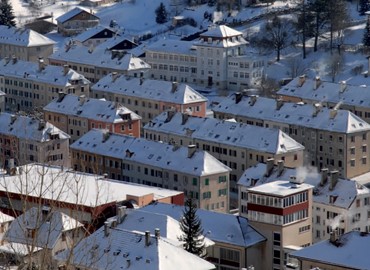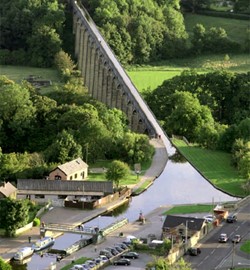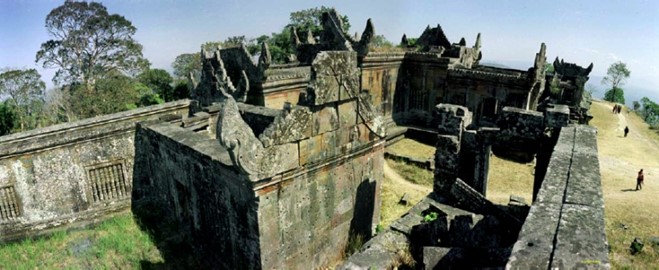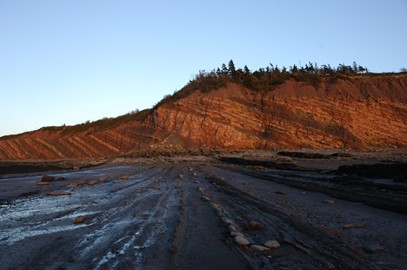search
Caves of Yagul and Mitla
The Caves of Yagul and Mitla, a UNESCO World Heritage site in Mexico, showcase an extraordinary collection of prehistoric rock art and archaeological remains dating back over 10,000 years. This site features well-preserved caves and shelters adorned with intricate paintings and carvings, offering valuable insights into the lives of early hunter-gatherer communities. Excavations have revealed ancient tools, ceramics, and evidence of early maize cultivation, highlighting the region's significance in the devel... Read More
Amsterdam Canal Ring
The Amsterdam Canal Ring, a UNESCO World Heritage site in the Netherlands, is a remarkable 17th-century urban planning masterpiece. This historic network of canals, lined with elegant merchant houses, showcases innovative water management and architectural beauty. Constructed during the Dutch Golden Age, it features concentric canals, bridges, and tree-lined streets that reflect the city’s economic prosperity and cultural heritage. Today, it remains a vibrant, functional part of Amsterdam, attracting visito... Read More
Hahoe and Yangdong
Hahoe and Yangdong, recognized as a UNESCO World Heritage site, are historic villages in Korea that exemplify traditional Confucian culture from the Joseon Dynasty. These well-preserved settlements showcase distinctive architecture, including thatched-roof houses and tiled-roof residences for the nobility, reflecting the social hierarchy of the era. The villages highlight traditional living patterns, with layouts designed to harmonize with the natural landscape, and they preserve cultural practices like fol... Read More
Putorana Plateau
The Putorana Plateau, a UNESCO World Heritage site in Russia, is a vast basalt plateau formed by ancient volcanic activity, featuring dramatic landscapes of deep canyons, waterfalls, and over 25,000 lakes. Often called the 'Land of a Thousand Waterfalls,' it hosts unique ecosystems with rare species like the Putorana snow sheep, thriving in isolation due to its remote Arctic location. Its geological significance and biodiversity make it a natural wonder, preserved for its pristine wilderness and scientific ... Read More
At Turaif District
At-Turaif District, a UNESCO World Heritage site in Saudi Arabia, is a historic area renowned for its well-preserved mud-brick architecture and cultural significance. Established in the 15th century, it served as the first capital of the Saudi dynasty, showcasing traditional Najdi urban design with palaces, mosques, and residential quarters. The site reflects the region’s political and religious heritage, offering insights into the early governance and societal structure of the Arabian Peninsula. Its restor... Read More
Central Highlands
The Central Highlands, a UNESCO World Heritage site in Sri Lanka, is renowned for its breathtaking biodiversity and stunning landscapes. This protected region encompasses montane forests, grasslands, and rugged peaks, harboring a rich array of endemic flora and fauna, including rare species like the Sri Lankan leopard and purple-faced langur. The area also holds cultural significance with ancient tea plantations and colonial-era architecture, reflecting its historical role in the island's tea industry. Its ... Read More
Sarazm
Sarazm, a UNESCO World Heritage Site in Tajikistan, is an ancient proto-urban settlement dating back to the 4th millennium BCE, showcasing the early development of human civilization in Central Asia. This archaeological site highlights a thriving Bronze Age community engaged in agriculture, metallurgy, and trade, with evidence of cultural and commercial connections stretching from Turkmenistan to the Indus Valley. Discovered in 1976 and excavated starting in 1977, Sarazm offers a glimpse into a sophisticate... Read More
Papahanaumokuakea
Papahānaumokuākea is a UNESCO World Heritage site northwest of the main Hawaiian Archipelago, recognized for its cultural and natural significance. It encompasses a vast region of islands and atolls in the Pacific Ocean, serving as a critical habitat for numerous endangered species, including seabirds, turtles, and monk seals. The site also holds deep cultural importance to Native Hawaiians, featuring ancient archaeological sites and embodying traditional ecological knowledge. Its remote location and protec... Read More
Hanoi Citadel
The Imperial Citadel of Thang Long - Hanoi, a UNESCO World Heritage site in Vietnam, is a historic fortress that served as the political and military center of the region for over a thousand years. Originally built in the 11th century during the Ly Dynasty, it showcases a blend of architectural styles reflecting its evolution through various ruling eras. Today, it stands as a significant cultural landmark, housing archaeological remains, ancient structures, and museums that offer insights into Vietnam’s ric... Read More
Wadden Sea
The Wadden Sea, a UNESCO World Heritage site in Denmark, Germany, and the Netherlands, recognized in 2009 with expansions in 2011 and 2014, is Europe’s largest tidal flat system, stretching along the North Sea coast. Its dynamic mudflats, sandbanks, and salt marshes support millions of migratory birds and marine life, reflecting a globally unique coastal ecosystem. This transnational site showcases the region’s natural heritage, preserved through cooperative efforts, highlighting the interplay of tides and ... Read More
Stoclet House
The Plantin-Moretus House, a UNESCO World Heritage site in Belgium, is a preserved 16th-century printing workshop and family home, celebrated as the world’s first museum of its kind. Established by Christophe Plantin and continued by the Moretus family, it houses historic printing presses, rare books, and archives, showcasing the dawn of modern publishing. Recognized by UNESCO in 2005, it offers a unique glimpse into Renaissance and Baroque intellectual life. The site remains a treasure of Belgium’s cultura... Read More
Loropéni
Loropéni, a UNESCO World Heritage site in Burkina Faso, is a medieval archaeological marvel featuring the ruins of a fortified settlement with towering stone walls. Dating back over 1,000 years, it thrived between the 14th and 17th centuries as a hub of the trans-Saharan gold trade, occupied by the Lohron or Koulango peoples. Recognized as the country’s first UNESCO site in 2009, it stands as the best-preserved of several regional fortresses, offering a glimpse into West Africa’s precolonial history and arc... Read More
Cidade Velha
Cidade Velha, a UNESCO World Heritage site in Cabo Verde, is a historic coastal town established in the late 15th century as one of the first European colonial outposts in the tropics. Known as the birthplace of Cape Verdean culture, it features well-preserved remnants like the Royal Fortress of São Filipe, colonial churches, and a pillory, reflecting its role in the transatlantic slave trade and Portuguese maritime expansion. Recognized for its cultural and historical significance, it offers a window into ... Read More
Mount Wutai
With its five flat peaks, Mount Wutai, a UNESCO World Heritage site in China, is a revered Buddhist mountain known for its five flat peaks and ancient monasteries. A spiritual center since the 1st century, it houses ornate temples with intricate statues and relics, set against a backdrop of rugged landscapes. This sacred site draws pilgrims and visitors seeking its profound cultural and natural harmony.
Shushtar
The Shushtar Historical Hydraulic System, a UNESCO World Heritage site in Iran, is an ancient engineering marvel featuring a network of canals, tunnels, and watermills. Built during the Sassanid era, this intricate system diverts river water to irrigate agricultural lands and power mills, showcasing exceptional ingenuity. Its well-preserved structures, including bridges and waterfalls, highlight its historical and technical significance as a testament to Persian hydraulic expertise.
Dolomites
The Dolomites, a UNESCO World Heritage site in Italy, are renowned for their dramatic limestone peaks and striking geological formations. This mountain range features a unique blend of rugged cliffs, deep valleys, and vibrant alpine meadows, shaped by millions of years of natural processes. Celebrated for their scenic beauty and scientific value, they offer a stunning testament to Earth's history and biodiversity.
Sulaiman Too
Sulaiman-Too, a UNESCO World Heritage site in Kyrgyzstan, is a striking limestone mountain revered for its historical and cultural importance. Rising prominently, it features ancient petroglyphs, caves, and shrines that trace centuries of human activity and spiritual traditions. Recognized for its role as a landmark for travelers and its well-preserved archaeological sites, it offers a unique glimpse into the region’s past.
Caral Supe
Caral-Supe, a World Heritage site in Peru, is recognized as one of the oldest civilizations in the Americas, dating back to around 2600 BCE. This archaeological site features monumental architecture, including pyramids, plazas, and residential complexes, showcasing advanced urban planning and social organization. Its significance lies in its well-preserved state, offering insights into early Andean culture, agriculture, and trade practices. Caral-Supe stands as a testament to the ingenuity of its ancient in... Read More
Royal Tombs of the Joseon
The Royal Tombs of the Joseon Dynasty, a UNESCO World Heritage site in Korea, are a collection of mausoleums built between the 15th and 20th centuries to honor the Joseon rulers and their families. These tombs exemplify traditional Confucian burial practices, featuring carefully designed layouts with stone statues, ceremonial pavilions, and natural landscapes that reflect harmony between architecture and nature. Recognized for their historical and cultural significance, they offer insight into the dynasty’s... Read More
Tower of Hercules
The Tower of Hercules is an ancient Roman lighthouse and UNESCO World Heritage site, recognized for its historical and architectural significance. Built in the 1st century AD, it stands as the oldest functioning lighthouse in the world, originally constructed to guide ships along the Atlantic coast. Its robust stone structure, later renovated in the 18th century, blends Roman engineering with neoclassical design, symbolizing centuries of maritime heritage. Today, it serves as both a navigational aid and a c... Read More
La Chaux de Fonds and Le Locle
La Chaux-de-Fonds and Le Locle, located in Switzerland, form a UNESCO World Heritage site renowned for their unique urban planning and watchmaking heritage. These towns exemplify a harmonious blend of residential and industrial spaces, designed in the 19th century to support the burgeoning watch industry. Their grid-like layouts, with wide streets and neoclassical buildings, reflect an innovative approach to town planning tailored to the needs of skilled artisans. Today, they stand as living testimonies to ... Read More
Pontcysyllte Aqueduct and Canal
The Pontcysyllte Aqueduct and Canal, a UNESCO World Heritage site in the UK, is an impressive feat of 18th-century engineering designed by Thomas Telford. This 11-mile-long canal features the iconic Pontcysyllte Aqueduct, a 126-foot-high cast iron and stone structure that carries the waterway over a river valley, making it the tallest navigable aqueduct in the world. Recognized for its historical and architectural significance, the site exemplifies the ingenuity of the Industrial Revolution and attracts vis... Read More
Rhaetian Railway
The Rhaetian Railway, a UNESCO World Heritage site in Italy and Switzerland, recognized in 2008, is a scenic rail network featuring the Albula and Bernina lines, completed in 1910, winding through the Alps. With stunning viaducts, tunnels, and spiral loops like the Landwasser Viaduct, it showcases early 20th-century engineering amid breathtaking mountain landscapes. This transnational site reflects a harmonious blend of technology and nature, highlighting the region’s cultural and industrial heritage.
Preah Vihear
The Temple of Preah Vihear, a UNESCO World Heritage site in Cambodia, is an 11th-century Khmer masterpiece perched atop a cliff, dedicated to the Hindu god Shiva. Renowned for its stunning architecture and intricate carvings, it reflects the spiritual and artistic zenith of the Khmer Empire. Recognized for its cultural and historical value, it stands as a striking symbol of ancient devotion and engineering prowess.
Joggins Fossil Cliffs
Joggins Fossil Cliffs, a UNESCO World Heritage site in Canada, are a 300-million-year-old coastal treasure from the Carboniferous period. Renowned for their fossilized forests, early reptiles, and the oldest known tracks of land animals, these cliffs offer an unparalleled record of life during the 'Coal Age.' Recognized for their scientific value, they stand as a window into Earth’s ancient ecosystems.
